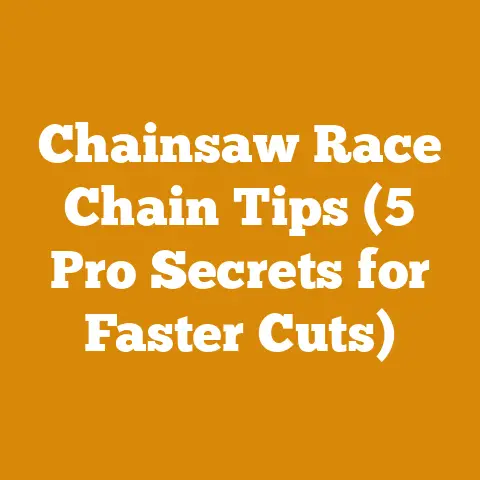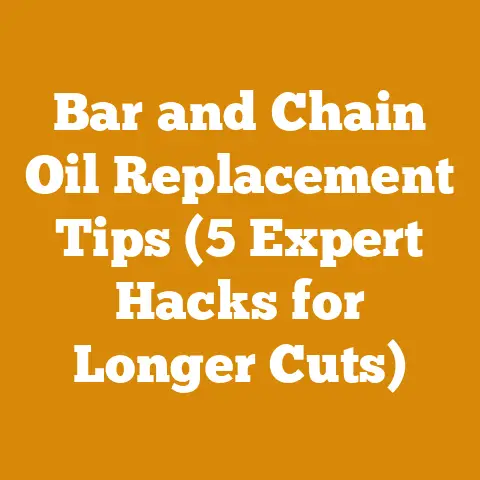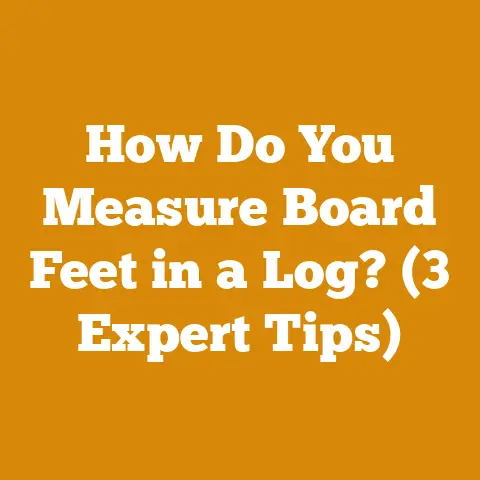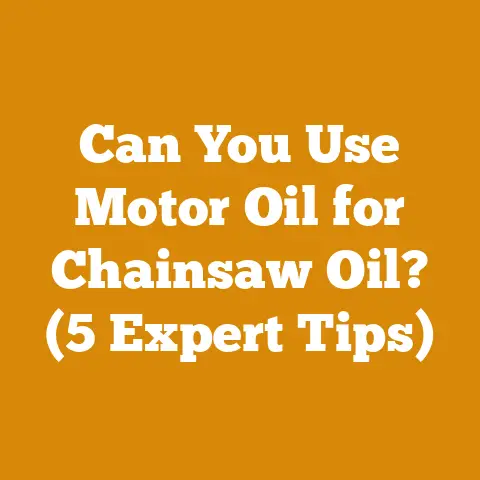Can I Pressure Wash My Grill? (Pro Tips for Perfect Wood-Fired BBQ)
Can I Pressure Wash My Grill? (Pro Tips for Perfect Wood-Fired BBQ)
Introduction: The Grimy Grill Dilemma and the Pressure Washing Solution
As a seasoned wood-fired BBQ enthusiast, I’ve seen my fair share of grills caked in stubborn grease, charred remnants, and layers of baked-on grime. This isn’t just an aesthetic issue; a dirty grill impacts flavor, cooking performance, and even hygiene. I’ve tried countless methods to tackle this problem, from tedious scrubbing with wire brushes to soaking grates overnight. Believe me, I know the frustration.
The question then becomes: Can I pressure wash my grill? The short answer is yes, but with caveats. Pressure washing can be a highly effective method for cleaning your grill, especially for those stubborn stains and hard-to-reach areas. However, it’s crucial to understand the right techniques, precautions, and potential risks involved. This guide will walk you through the process step-by-step, ensuring you achieve a spotless grill without causing damage or compromising your food safety. I will share my own experiences, technical insights, and pro tips to help you master the art of pressure washing your grill like a true BBQ aficionado.
1. Understanding the Challenge: Why a Dirty Grill Matters
Before diving into the how-to, let’s understand why a clean grill is so important. It’s not just about appearances; it’s about performance, safety, and the overall BBQ experience.
- Flavor Impairment: Old grease and charred food particles can impart unpleasant flavors to your food. Imagine painstakingly smoking a brisket for 12 hours only to have it taste like burnt residue from last month’s burgers. Nobody wants that.
- Uneven Cooking: Grime buildup can create hot spots and cold spots on your grill surface, leading to uneven cooking. This can result in some parts of your food being overcooked while others are undercooked.
- Hygiene Concerns: A dirty grill is a breeding ground for bacteria and mold. These contaminants can transfer to your food, posing a health risk.
- Fire Hazard: Grease buildup is a major fire hazard. When the grease ignites, it can lead to uncontrolled flames and potentially damage your grill or even your property.
- Reduced Grill Lifespan: Neglecting grill maintenance can lead to corrosion and premature wear and tear, shortening the lifespan of your investment.
2. Is Pressure Washing Right for Your Grill? Assessing the Risks and Benefits
Pressure washing offers several advantages over traditional cleaning methods. However, it’s not a one-size-fits-all solution. Here’s a breakdown of the pros and cons:
Benefits:
- Efficiency: Pressure washing is significantly faster and more efficient than manual scrubbing. It can blast away stubborn grime in a fraction of the time.
- Thoroughness: Pressure washers can reach areas that are difficult to access with brushes or sponges, ensuring a more thorough cleaning.
- Effectiveness: High-pressure water can remove even the most baked-on grease and charred residue.
Risks:
- Damage to Grill Components: Excessive pressure can damage delicate grill components, such as burners, igniters, and porcelain-coated grates.
- Water Contamination: Pressure washing can force water into areas where it shouldn’t be, such as gas lines or electronic components, leading to corrosion or malfunction.
- Surface Erosion: Over time, repeated pressure washing can erode the surface of your grill grates, especially if they are made of cast iron or other porous materials.
- Safety Hazards: High-pressure water can be dangerous if not handled properly. It can cause serious injury if directed at skin or eyes.
My Personal Experience:
I once made the mistake of using too high a pressure setting on my beloved Weber grill. The force of the water dislodged some of the porcelain coating on the grates, leaving them vulnerable to rust. I learned my lesson the hard way: always start with the lowest pressure setting and gradually increase it as needed.
3. Preparing Your Grill for Pressure Washing: A Step-by-Step Guide
Proper preparation is key to a successful and safe pressure washing experience. Follow these steps:
- Safety First: Wear safety glasses, gloves, and closed-toe shoes to protect yourself from flying debris and high-pressure water.
- Disconnect the Gas or Electricity: For gas grills, disconnect the propane tank. For electric grills, unplug the power cord. This is crucial to prevent electrical shock or gas leaks.
- Remove Removable Components: Take out the grates, burner covers, and any other removable components. This will allow you to clean them separately and prevent water from getting trapped in hard-to-reach areas.
- Pre-Soak (Optional): For heavily soiled grills, consider pre-soaking the grates and other components in a solution of warm water and dish soap. This will help loosen the grime and make it easier to remove with the pressure washer.
- Protect Surrounding Areas: Cover any nearby surfaces that you don’t want to get wet or dirty. This could include your patio furniture, walls, or landscaping.
4. Choosing the Right Pressure Washer and Nozzle: Understanding PSI and GPM
Selecting the right pressure washer and nozzle is crucial for achieving optimal cleaning results without damaging your grill.
- Pressure Washer PSI (Pounds per Square Inch): PSI measures the force of the water stream. For grill cleaning, I recommend using a pressure washer with a PSI rating between 1500 and 2000. Anything higher could damage delicate grill components.
- Flow Rate GPM (Gallons per Minute): GPM measures the volume of water delivered by the pressure washer. A higher GPM will generally result in faster cleaning. A GPM rating of 1.5 to 2.0 is ideal for grill cleaning.
- Nozzle Selection:
- Wide-Angle Nozzle (40-Degree or 65-Degree): This nozzle provides a gentle, wide spray pattern that is ideal for general cleaning and rinsing.
- Narrow-Angle Nozzle (25-Degree): This nozzle provides a more concentrated spray pattern that is suitable for removing stubborn grime. Use this nozzle with caution, as it can be more likely to damage grill components.
- Soap Nozzle: This nozzle is designed to dispense soap or detergent. It is useful for pre-soaking the grill or for cleaning heavily soiled areas. Never use harsh chemicals or bleach in your pressure washer.
Technical Data:
- Optimal PSI for Grill Cleaning: 1500-2000 PSI
- Optimal GPM for Grill Cleaning: 1.5-2.0 GPM
- Recommended Nozzle Angle: 40-Degree or 65-Degree for general cleaning, 25-Degree for stubborn grime (use with caution)
5. Pressure Washing Techniques: Mastering the Art of Grill Cleaning
Now that you have your grill prepped and your pressure washer ready, it’s time to start cleaning. Follow these techniques for best results:
- Start with a Low Pressure Setting: Begin with the lowest pressure setting on your pressure washer and gradually increase it as needed. This will help you avoid damaging your grill.
- Maintain a Safe Distance: Keep the nozzle at least 12 inches away from the grill surface. This will prevent the water stream from being too concentrated and damaging the grill.
- Use a Wide, Sweeping Motion: Move the nozzle in a wide, sweeping motion to evenly distribute the water pressure.
- Focus on Problem Areas: Pay extra attention to areas with heavy grease buildup or charred residue. You may need to use a narrower angle nozzle for these areas, but be careful not to hold the nozzle too close to the surface.
- Rinse Thoroughly: After cleaning, rinse the grill thoroughly with clean water to remove any remaining soap or detergent.
- Dry Completely: Allow the grill to dry completely before reassembling it. This will help prevent rust and corrosion.
Pro Tip:
For stubborn grease, try using a degreasing solution specifically designed for grills. Apply the solution to the grill surface, let it sit for a few minutes, and then pressure wash it off.
6. Cleaning Different Grill Components: A Tailored Approach
Different grill components require different cleaning approaches. Here’s a breakdown:
- Grates: Grates are the most frequently used and often the dirtiest part of the grill. Pressure washing is an effective way to clean grates, but be careful not to damage the surface. For porcelain-coated grates, use a wide-angle nozzle and a low-pressure setting. For cast iron grates, you may need to use a narrower angle nozzle and a higher pressure setting, but be sure to re-season them after cleaning to prevent rust.
- Burner Covers: Burner covers protect the burners from grease and debris. They can be pressure washed using a wide-angle nozzle and a low-pressure setting. Be sure to remove any loose debris before pressure washing.
- Burners: Burners are the heart of the grill and should be treated with care. Avoid pressure washing the burners directly, as this can damage the gas orifices. Instead, use a brush or compressed air to clean them.
- Grill Body: The grill body can be pressure washed using a wide-angle nozzle and a low-pressure setting. Be sure to avoid spraying water into the gas lines or electronic components.
7. Post-Cleaning Maintenance: Keeping Your Grill in Top Shape
After pressure washing your grill, it’s important to perform some post-cleaning maintenance to keep it in top shape.
- Re-Season Cast Iron Grates: If you have cast iron grates, re-season them after cleaning to prevent rust. To re-season, coat the grates with a thin layer of cooking oil and bake them in the oven at 350 degrees Fahrenheit for one hour.
- Inspect for Damage: Check the grill for any signs of damage, such as cracks, rust, or loose components. Repair or replace any damaged parts as needed.
- Lubricate Moving Parts: Lubricate any moving parts, such as hinges and knobs, with a food-grade lubricant.
- Cover Your Grill: When not in use, cover your grill with a grill cover to protect it from the elements.
8. Alternative Cleaning Methods: When Pressure Washing Isn’t the Answer
While pressure washing is an effective cleaning method, it’s not always the best option. Here are some alternative cleaning methods:
- Wire Brush: A wire brush is a classic tool for cleaning grill grates. Use a sturdy wire brush to scrub away loose debris and grease.
- Steam Cleaning: Steam cleaning is a gentle and effective way to clean grills. Steam cleaners use hot steam to loosen grime and kill bacteria.
- Oven Cleaner: Oven cleaner can be used to clean heavily soiled grill grates. However, be sure to use a non-toxic oven cleaner and rinse the grates thoroughly after cleaning.
- Vinegar and Baking Soda: A mixture of vinegar and baking soda can be used to clean grill grates. Apply the mixture to the grates, let it sit for a few minutes, and then scrub with a brush.
9. Safety Precautions: Protecting Yourself and Your Grill
Safety is paramount when pressure washing your grill. Follow these precautions to protect yourself and your grill:
- Wear Safety Glasses, Gloves, and Closed-Toe Shoes: Protect yourself from flying debris and high-pressure water.
- Disconnect the Gas or Electricity: Prevent electrical shock or gas leaks.
- Never Point the Nozzle at Yourself or Others: High-pressure water can cause serious injury.
- Keep Children and Pets Away: Keep children and pets away from the area while you are pressure washing.
- Avoid Spraying Water into Gas Lines or Electronic Components: Prevent corrosion or malfunction.
- Follow the Manufacturer’s Instructions: Read and follow the manufacturer’s instructions for your pressure washer and grill.
10. Troubleshooting Common Problems: Addressing Issues That May Arise
Even with careful planning and execution, you may encounter some problems while pressure washing your grill. Here are some common issues and how to address them:
- Grime Not Coming Off: If the grime is not coming off easily, try using a narrower angle nozzle or increasing the pressure setting. You may also need to pre-soak the grill with a degreasing solution.
- Grill Grates Rusting: If your grill grates are rusting, re-season them after cleaning. You may also need to use a rust remover.
- Pressure Washer Not Working: If your pressure washer is not working, check the power cord, water supply, and nozzle. You may also need to clean the filter.
- Damage to Grill Components: If you damage any grill components, repair or replace them as needed.
11. Case Study: Restoring a Neglected Grill
I once took on the challenge of restoring a neglected grill that had been sitting unused for years. It was covered in rust, grease, and cobwebs. The grates were completely encrusted with charred food.
I started by disassembling the grill and soaking the grates in a solution of warm water and dish soap. I then used a wire brush to remove as much of the rust and grime as possible. Next, I pressure washed the grates and the grill body using a wide-angle nozzle and a low-pressure setting.
After pressure washing, I re-seasoned the cast iron grates and lubricated the moving parts. I also replaced a few rusted screws and bolts.
The result was a grill that looked almost as good as new. It took some time and effort, but it was well worth it to restore a valuable piece of equipment.
Technical Details of the Restoration:
- Grill Type: Weber Genesis Gas Grill (circa 2005)
- Condition: Heavily rusted, grease-encrusted, non-functional
- Cleaning Methods: Soaking, wire brushing, pressure washing
- Materials Used: Dish soap, cooking oil, rust remover, lubricant, replacement screws and bolts
- Time Spent: Approximately 8 hours
12. The Future of Grill Cleaning: Innovations and Trends
The world of grill cleaning is constantly evolving. Here are some emerging trends and innovations:
- Robotic Grill Cleaners: These automated devices can clean your grill grates with minimal effort.
- Self-Cleaning Grills: Some grills are equipped with self-cleaning features that use high heat to burn off grease and debris.
- Eco-Friendly Cleaning Solutions: More and more eco-friendly cleaning solutions are becoming available.
- Smart Grill Technology: Smart grills can monitor temperature and cooking times and even alert you when it’s time to clean the grill.
13. Conclusion: A Clean Grill, A Better BBQ Experience
Cleaning your grill, whether through pressure washing or another method, is an essential part of maintaining your equipment and ensuring a safe and enjoyable BBQ experience. By understanding the risks and benefits, following the proper techniques, and taking the necessary precautions, you can keep your grill in top shape for years to come. So, fire up your grill, invite your friends and family, and enjoy the fruits (or meats) of your labor! A clean grill truly makes all the difference.






